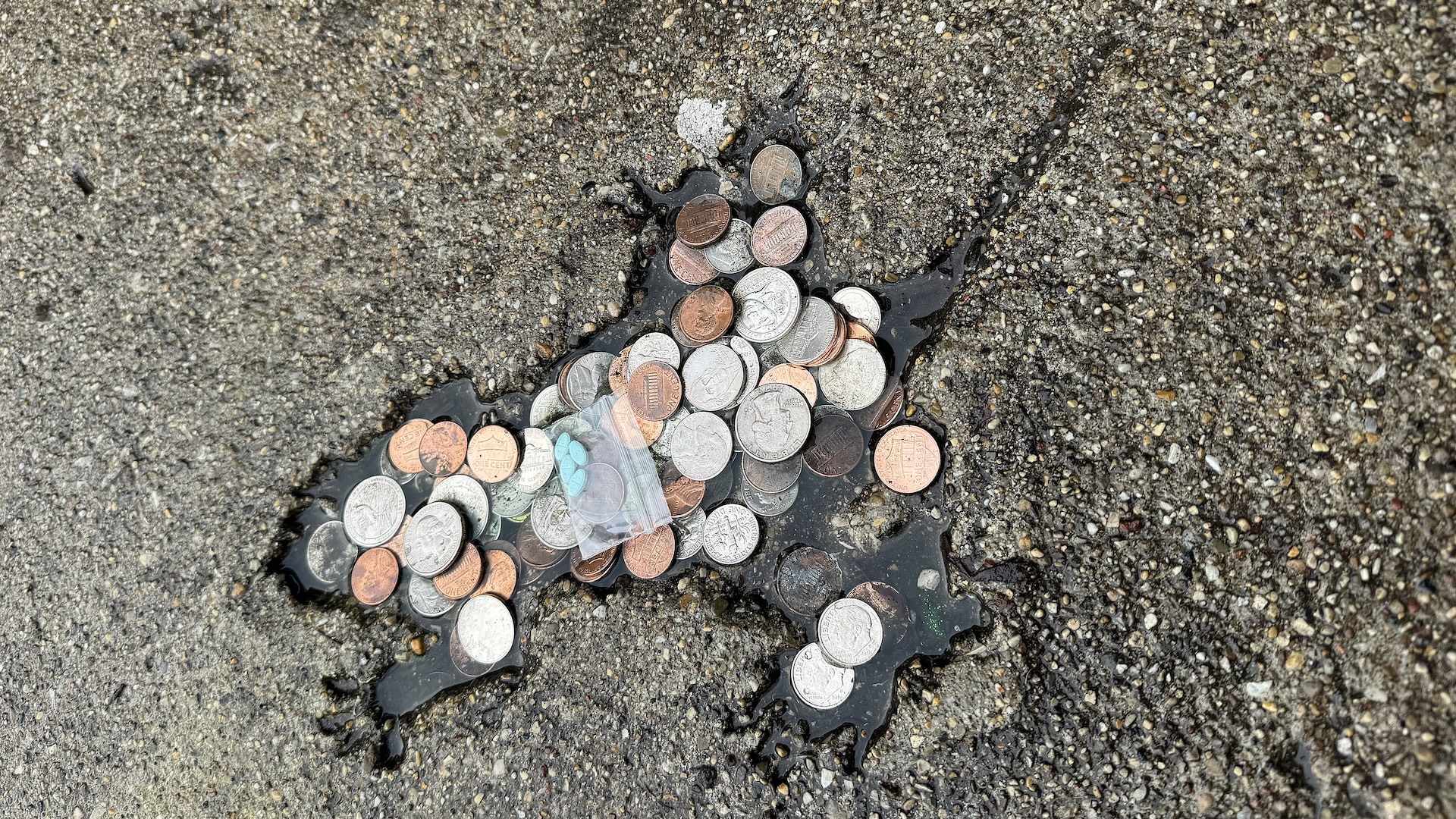
Boo at the Zoo: Animals Get Their Spook On
Elephant Denver Zoo

Mimi the elephant inspects a busted pumpkin.
Mimi is an Asian elephant (Elephas maximus), the largest living land animal in Asia. They are listed as endangered due to habitat destruction and poaching.
Mongoose Denver Zoo

A mongoose peaks out of a pumpkin at the Denver Zoo.
There are 33 species of mongoose that range from Europe to Asia and mainland Africa.
Porcupine Denver Zoo

A porcupine inspects its pumpkin treat.
Porcupines are rodents with a coat of sharp quills that protect them from predators.
Polar Bear Port Defiance Zoo & Aquarium

A polar bear chomps on a pumpkin floating in the water.
Get the world’s most fascinating discoveries delivered straight to your inbox.
Polar bears (Ursus maritimus) are one of the world's few all-white animals. Only its eyes, nose pad, and lips are black; although beneath its white fur, its skin is also black. The bear's white coat, which helps it blend with its icy environs, is thick, and covers a thick fat layer. These two adaptations enable polar bears to survive harsh Arctic winters.
Tiger cubs Port Defiance Zoo & Aquarium
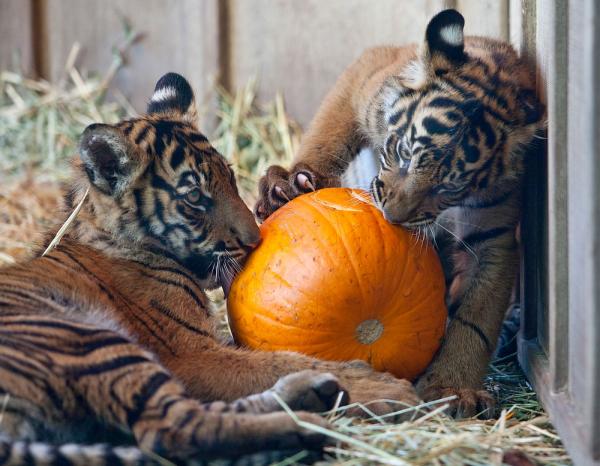
Sumatran tiger cubs Bima and Mali wrestle a pumpkin.
Bima (the male cub) means brave, and Mali (the female) means flower. Sumatran tigers are found only on the Indonesian island of Sumatra in lowland and montane forests.
Aldabra tortoise ZooAtlanta
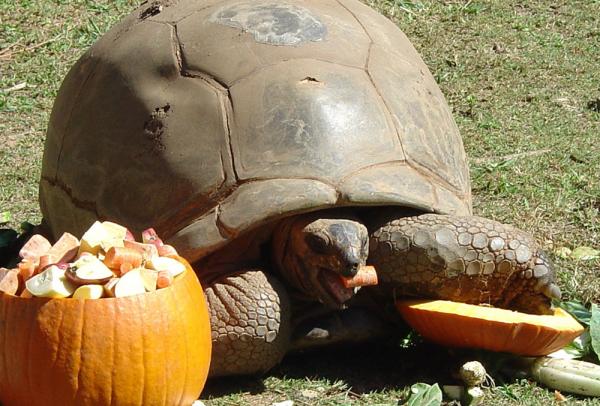
An Aldabra tortoise snacks on a carrot treat from a pumpkin.
Aldabras are the world's second-largest tortoise species. They are known to live over 100 years and are quicker than they appear; they are even agile enough to stand on their hind legs.
Rhinoceros ZooAtlanta

A black rhino nudges a pumpkin in its habitat.
They live on the African plains and are critically endangered. They are locally extinct in some of their original range.
Rhino horns are made of keratin, the same material that is in human hair and fingernails.
Milky Eagle Owl ZooAtlanta
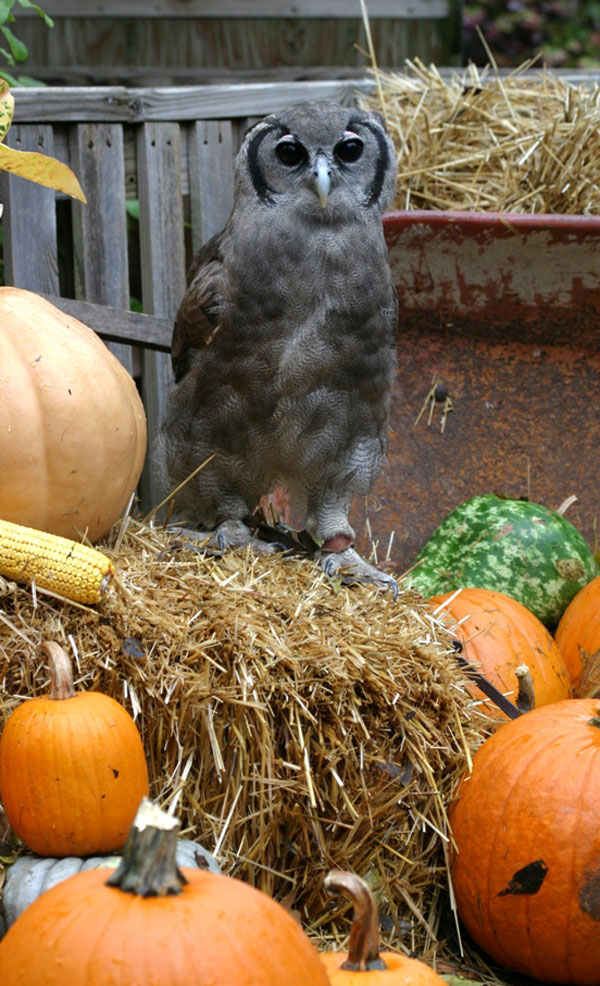
One Halloween symbol stands next to another, pumpkins.
This owl, named Mandela, is a Milky Eagle Owl (Bubo lacteus) , the largest African owl species. They are extremely powerful and will often crash down through the tree canopy to catch sleeping prey.
Gorilla ZooAtlanta
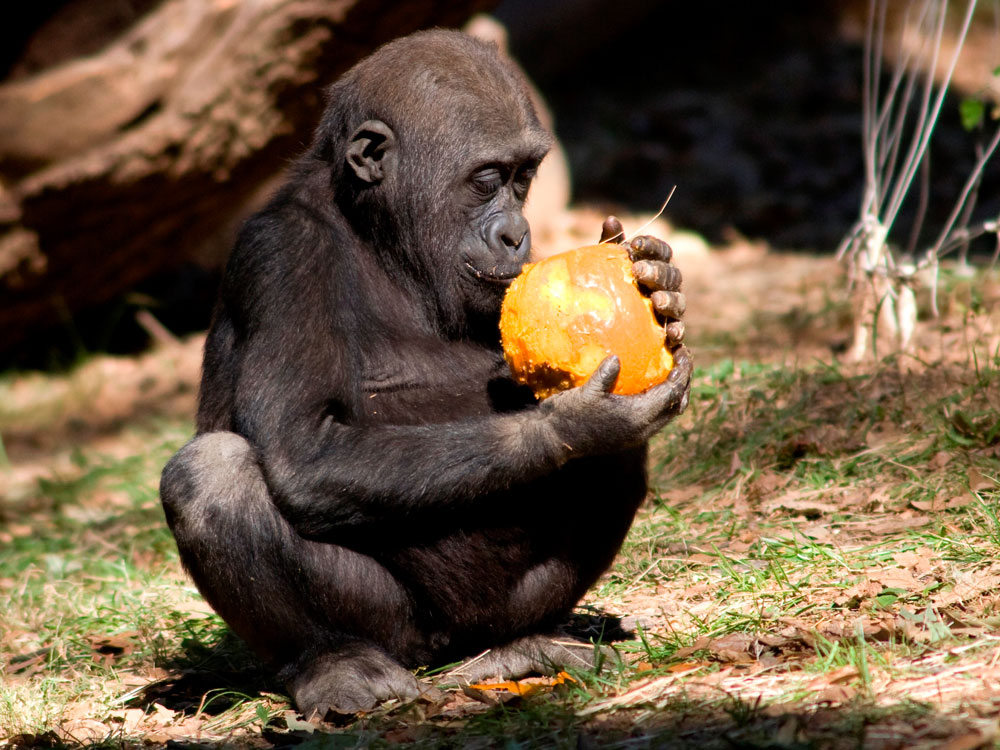
This gorilla kid inspects his little pumpkin treat.
Western lowland gorillas (Gorilla gorilla gorilla) are critically endangered, with approximately 100,000 remaining in the wild. They live in the tropical forests of West Africa. Countries include Cameroon, Nigeria, Central African Republic, Angola, Gabon, Republic of Congo and Equatorial Guinea.
Gorillas are born after approximately 9 months of gestation (just like humans). Newborn babies weigh 3-5 pounds and cling to their mothers' hair immediately. Females usually give birth to a single offspring, although occasionally twins can be born. Mothers will hold their babies all the time for about the first four months of life. Infants start trying solid foods around 6 months of age but nurse until they are 3 or 4 years old.

